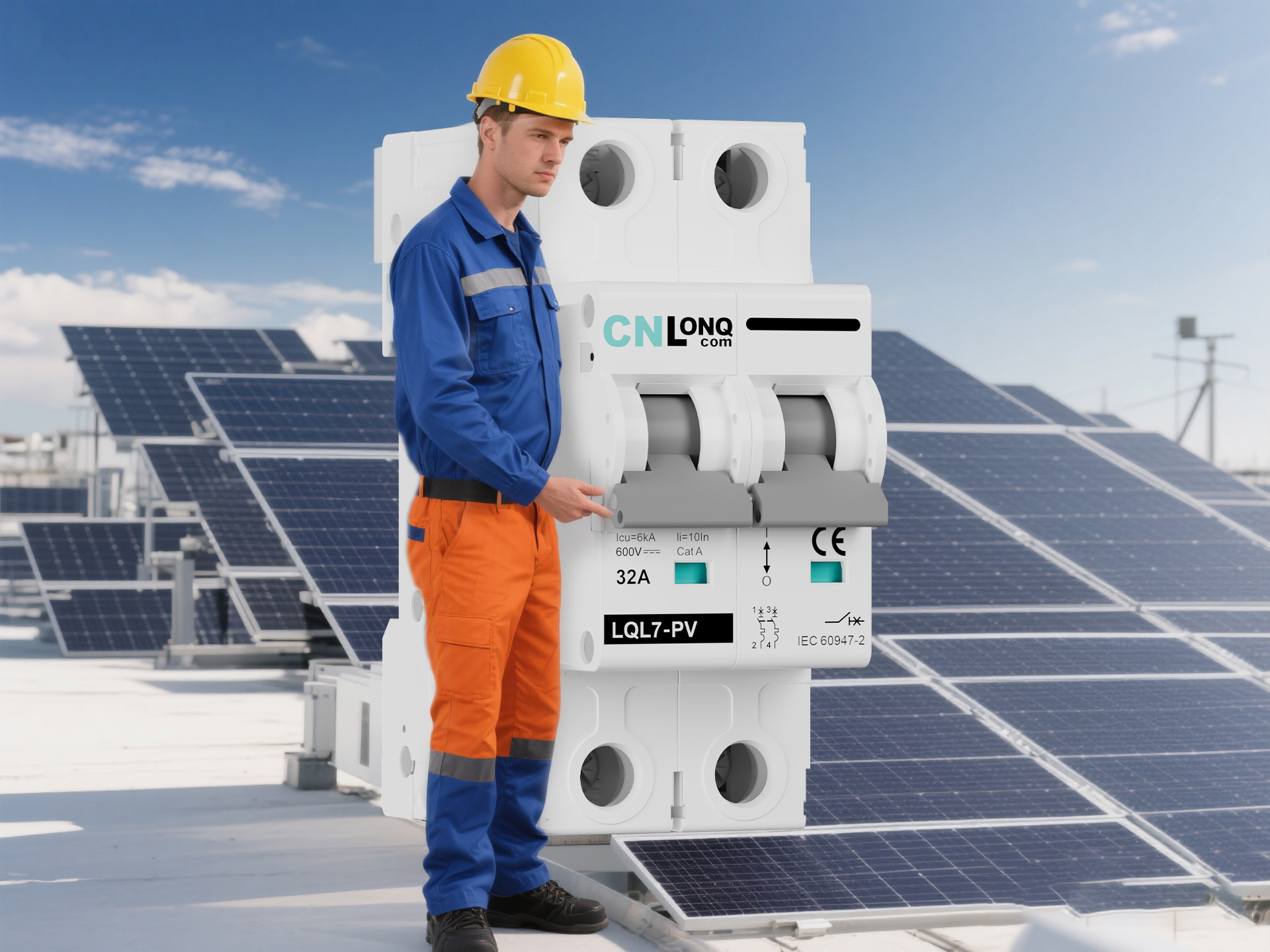
- English
- Español
- Português
- русский
- Français
- 日本語
- Deutsch
- tiếng Việt
- Italiano
- Nederlands
- ภาษาไทย
- Polski
- 한국어
- Svenska
- magyar
- Malay
- বাংলা ভাষার
- Dansk
- Suomi
- हिन्दी
- Pilipino
- Türkçe
- Gaeilge
- العربية
- Indonesia
- Norsk
- تمل
- český
- ελληνικά
- український
- Javanese
- فارسی
- தமிழ்
- తెలుగు
- नेपाली
- Burmese
- български
- ລາວ
- Latine
- Қазақша
- Euskal
- Azərbaycan
- Slovenský jazyk
- Македонски
- Lietuvos
- Eesti Keel
- Română
- Slovenski
- मराठी
- Srpski језик
Miniature Circuit Breakers: A Deep Dive into Their Evolution, Functioning, and Selection
2025-09-08
A Glimpse into the Evolution of Miniature Circuit Breakers
The journey of circuit breakers began in 1885. The earliest form was a simple combination of a knife switch and an over-current trip device, which was the first step in protecting electrical circuits from excessive currents, opening a new chapter in electrical safety.
1905 saw a major breakthrough with the invention of the air circuit breaker featuring a free-tripping mechanism. This innovation enhanced the efficiency and reliability of circuit protection. However, the electromagnetic trip devices of that time had limitations in precisely controlling their protective properties.
By the 1930s, rapid advancements in science and technology, particularly in the understanding of arc physics and the development of various arc-extinguishing devices, transformed the design of circuit breakers, shaping them into the modern structures we know today.
The 1950s brought the electronics revolution to circuit breakers, leading to the creation of electronic trip devices. These offered more accurate control and superior protection compared to electromagnetic ones. In the late 20th century, with the miniaturization and widespread use of computers, intelligent circuit breakers emerged. They not only protect circuits but also communicate and provide valuable data on the electrical system's status.
In China, the development of miniature circuit breakers followed global trends. In the 1950s, the first domestic DZ1 series of molded-case circuit breakers, based on Soviet models, were introduced. Over time, continuous improvements and innovations have been made to meet market demands.
How Do Miniature Circuit Breakers Work?
Miniature circuit breakers operate on simple yet effective principles. Their main function is to detect abnormal electrical conditions and cut off the current to prevent damage to electrical appliances and fire risks.
Overload Protection: When an excessive current flows through the circuit for a long time (overload), the heat generated causes a bimetallic strip inside the MCB to heat up and bend. This bending triggers a mechanical mechanism that disconnects the contacts, breaking the circuit. For instance, using multiple high-power appliances like heaters, air conditioners, and electric ovens on one circuit increases the current. If it exceeds the MCB's rated capacity, the bimetallic strip reacts to the heat and trips the breaker.
Short-Circuit Protection: In a short-circuit, where two conductors accidentally connect with very low resistance, a huge current flows instantly. MCBs use an electromagnetic coil for this. The high current creates a strong magnetic field around the coil, attracting a plunger or armature, which opens the contacts and interrupts the circuit. Short-circuits can occur due to damaged wire insulation or foreign objects touching live conductors.
Some advanced MCBs, especially smart ones, have additional sensors to monitor voltage, temperature, and leakage current. These sensors send data to a control module, which analyzes it and trips the breaker if there's an issue.
Selecting the Right Miniature Circuit Breaker
Choosing the right MCB is vital for the safety and efficiency of your electrical system. Consider these factors:
1. Rated Current
The rated current is the maximum current the MCB can carry continuously. It should be slightly higher than the circuit's expected maximum load. For homes, bedrooms and living rooms with lower loads may need 16A-20A MCBs. Kitchens (with stoves, microwaves, dishwashers) and bathrooms (with water heaters, hairdryers) need 20A-32A. Industrial settings with heavy machinery require higher ratings.
2. Number of Poles
MCBs come in different pole configurations:
•Single-Pole (1P): Controls only the live wire, used for lighting circuits for safe maintenance.
•Double-Pole (2P): Controls both live and neutral wires, offering extra protection. Often used as the main switch for 220V home circuits or for sensitive electronics.
•Three-Pole (3P) and Four-Pole (4P): 3P is for three-phase systems, controlling each phase. 4P is for three-phase systems where the neutral needs switching, like in some industrial setups or large building main switchboards.
3. Type of Trip Curve
•C-Type Trip Curve: Suitable for general use, like lighting, household appliances, and small motors. Trips when current is 5-10 times the rated value. For example, a 10A C-type MCB trips at 50A-100A.
•D-Type Trip Curve: Used for high inrush current applications, such as motors, transformers, and industrial equipment. Trips when current is 10-20 times the rated value.
4. Brand and Quality
Choose well-known brands that meet international safety standards. Brands like Schneider Electric, ABB, and Siemens are reputable. They undergo strict testing to ensure safety and performance. A quality MCB offers reliable protection and a longer lifespan.
5. Additional Features (for Smart MCBs)
In smart homes and industrial automation, smart MCBs are popular. They have features like:
•Remote Monitoring and Control: Check and control the MCB remotely via app or computer, useful for homeowners away or facility managers.
•Energy Monitoring: Measure individual circuit energy use to manage consumption efficiently.
•Fault Alerts: Send instant alerts for overloads, short-circuits, etc., allowing quick action.
In conclusion, miniature circuit breakers have evolved from simple over-current protectors to advanced intelligent components. Understanding their working principles and selection criteria helps you choose the right one, ensuring safety, reliability, and optimal performance of your electrical system.




